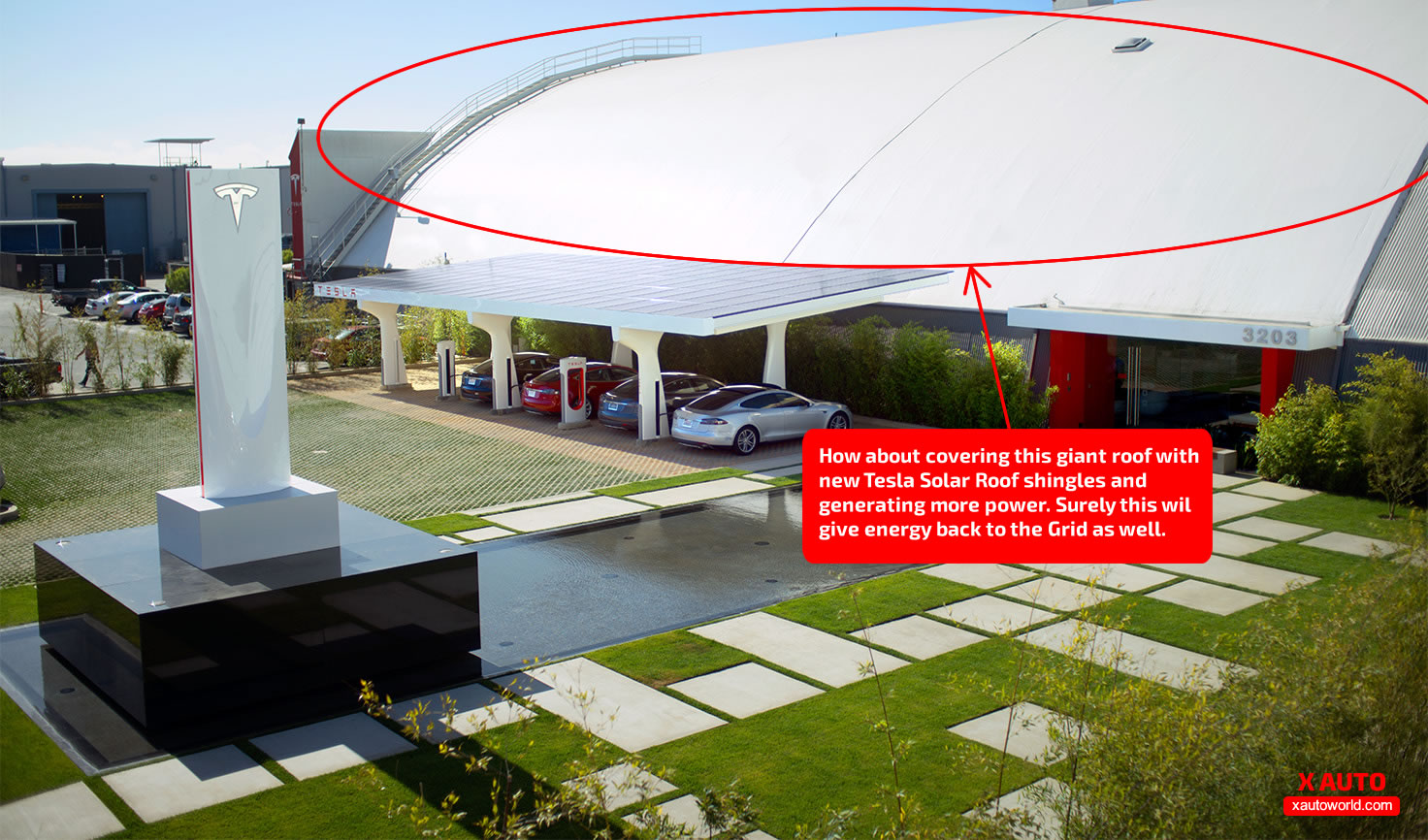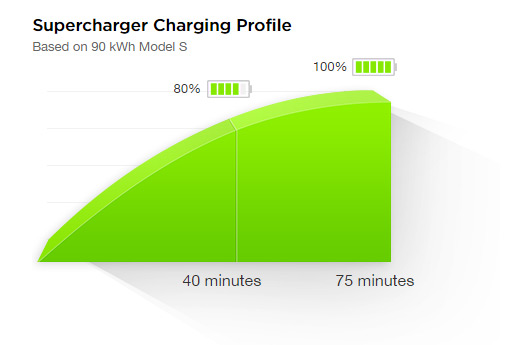Elon Musk’s Next Gen Supercharger V3 – Powerful Yet One Step Closer To A Greener World
Dec 27, 2016 | by Tesla Enthusiast & A Green World Dreamer Iqtidar Ali
Elon Musk undoubtedly is the most innovative person of the 21st century and has the ability to make headlines every few days with his unrestrained imagination. Just a day before Christmas teases about the next gen Supercharger V3.
In a tweet Elon Musk replied to Frederic Lambert of ElectrekCo’s question about “Any update on plan to install solar arrays at Supercharger stations?” And Elon Musk Replied;
There are some installed already, but full rollout really needs Supercharger V3 and Powerpack V2, plus SolarCity. Pieces now in place.
Further exchange of tweets between the two (below) reveals that Tesla is plans to bring the next generation of Superchargers that would be well beyond 350 kW ultra-fast chargers that Audi, BMW, Mercedes, Porsche and Ford announced last month.
According to Elon’s statement 350 kW will look like child’s play in-front of the V3 Supercharger that might already have been developed as Elon says that “Pieces now in place“.
A Bit Of Tesla Supercharger History
As more and more people are added to the ‘green electric-vehicle evolution’ every day I thought it would be great to share some history of Tesla Superchargers.
On Sep 24, 2012 Tesla held an unveil event at Hawthorne, CA for the launch of V1 Tesla Superchargers. At this time the capability of Superchargers was 100 kW (charging science explained below) which theoretically could charge a 100 kW battery from 0-100% in one hour.
Let’s watch the unveil event again to refresh some of the memories from 2012 and later we will discuss how far we have come since.
Since 2012 the capability of Tesla Superchargers have increased from 100 kW to 120 kW and eventually to the latest 145 kW. This increase of power along with the proliferation of charging stations globally have addressed the issue of electric-cars not being able to drive long distances.
At the time of the launch there were only 6 Supercharging stations strategically located on the Boston-to-Washington and Los Angeles-to-San Francisco highway corridors. Tesla have kept their promise to grow the network globally and as of today we have 769 Supercharger stations with 4,876 Superchargers (click for detailed map).
As we can listen to Elon Musk in the Supercharger unveil video saying that future Supercharger stations will put more energy back to grid more than the cars will use. But this dream would only come true when the stations would be generating their own energy, the solution was having a solar roof on the charging station as we can see in the above picture of the Hawthorne, CA Supercharger station.
The missing piece still in the puzzle is the Tesla Supercharger V3. Tesla has acquired SolarCity and have already unveiled their infinitely scalable energy storage solution Powerpack V2 at the Solar Roof launch event.
So as soon as Supercharger V3 is brought to light, the next generation Supercharger stations will start to emerge or the existing ones will be gradually upgraded. This setup will also help realize Elon Musk’s dream of giving energy back to the grid and the already green cars will become greener.
Surely now the critics should be convinced that Electric Vehicles are not just zero-emission but also will help burn less fossil-fuel and coal for electricity generation.

While looking at the Hawthorne, CA Supercharger station it just clicked to my mind if that empty roof is covered with Tesla Solar Roof shingles, how much energy that would genrate? I am not sure some engineers from Tesla could answer that.
Since this picture is from 2013 when Elon Musk explained Tesla’s Supercharger expansion plans. At that time the Solar Roof was not realized and installing old solar panels on a curved roof would be a challenge but today it is possible.
So the dreams of a greener world and fighting global-warming are much more close with Tesla’s new combination of Solar Roofs, Powerpack 2 and Supercharger V3.
Estimating Supercharger V3 Capability
Let’s try to understand how battery capacities charging speeds are measured. All of the following calculation is based on the reply by cac2573 on reddit, many thanks to him for ELI5 (Explaining Like I am 5 years old).
Batteries have a certain capacity, measured in energy (i.e. Joules or Watt-hours). The current top of the line battery is 100 kW (P100D). In other words, the battery can put out 100 kW of power for an hour.
Say we have a 100 kW charger available. Over the course of an hour, that will provide 100 kW of energy. So, a 100 kW charger will take an hour to “fill up” a 100 kW battery (ignoring all the other variables, of course).
Thus, a higher rated charger will fill up the battery faster. A 200 kW charger can do it in 30 minutes. A 350 kW could theoretically do it in around 20 minutes, and so on.
The hardware on the board the car needs to support these high charge rates (not to mention the battery itself).
So while older hardware might not benefit directly from this, there are other perks of having high charge rate Superchargers.
Right now, Superchargers are paired off (A and B stalls).
They split the power available between the two. If a Model S is charging by itself, it gets all the energy. If another S/X/3 comes in, that power is split in half (roughly speaking, this isn’t entirely true) and thus it takes twice as long as to charge (for the same principles explained above).
If we have 350 kW or even 500 kW chargers, then we could split the power 2 or even 5 ways and still have enough power to be on our way in a reasonable amount of time.

But the situation here is that Elon Musk the great is referring to 350 kW as ‘children’s toy’, so what assumption can we make about the Supercharger V3’s power? Let’s see 500 kW for being modest and keeping our feet on the ground.
So if it is 500 kW then it’s about 3.44 times more than the current 145 kW Supercharger. What that translates to is 3.44 times less time to charge the battery so from 10-80% it takes 40 mins currently on 90 kW model and if we divide 40 by 3.44 the result is approx 11.627 mins.
So if you get a range of 170 – 200 miles in a 11 and a half minutes or even in 12 mins that sounds pretty good for Tesla and EVs in general and surely very bad news for ICE manufacturers, it will be ice-age for them if things keep happening like this in very near future.
Conclusion
I am sure the dreams of Elon Musk and his members of the ‘world saving cult’ are coming true. What traditional automakers don’t understand about Elon, Tesla and SpaceX is that this is not just a business it’s a mission and it’s about the future of every living being (not just humans) on this planet. This mission and a belief that we can save the future, is what drives crazy everyone involved.
So let’s wait for the Supercharger V3 and see what wonders can it do with it’s ‘Super-powers’. 2017 surely will be the biggest year for Tesla yet.


No Comments